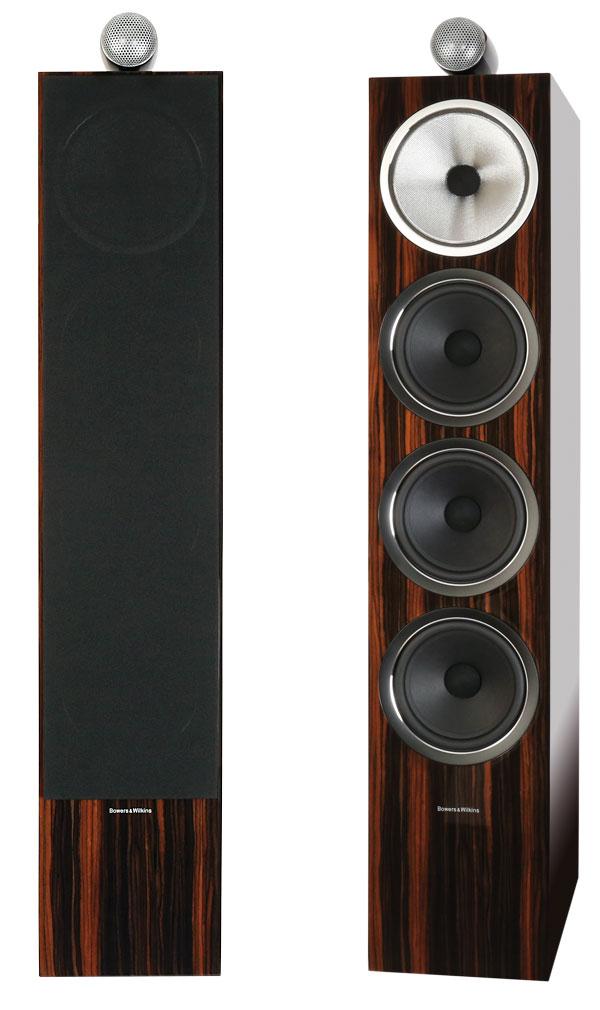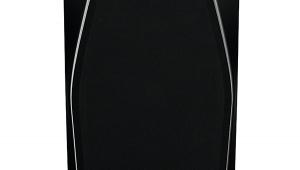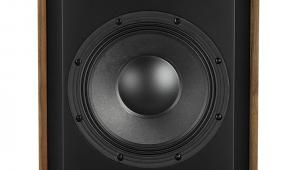B&W 702 Signature Loudspeaker

 An enhanced crossover and Datuk Gloss ebony-coloured veneer sees the 702 S2 offered in a 'Signature' guise
An enhanced crossover and Datuk Gloss ebony-coloured veneer sees the 702 S2 offered in a 'Signature' guise
You'd be forgiven for a double-take when gazing upon the latest offerings from Bowers & Wilkins, the £4499 702 Signature speakers. One of two new Signature models from the Worthing-based company – the other is the £2699 705 Signature standmount – there's little to set this slender floorstander apart from the £3399 702 S2 on which it's based [HFN Dec '17], beyond a rather snazzy wood finish to the cabinet, some shinier trim-rings around the drivers, with a matching grille over the tweeter, and a metal 'Signature' plate on the rear panel.
The in-house designed and built drivers are the same, as is the configuration, the just under 1m-tall cabinet housing a midrange driver and a trio of bass units, the latter tuned with a rear-venting port. The tweeter sits in its own pod atop the enclosure, in a design the company calls 'tweeter-on-top' derived from its 800 series, and long a feature of upmarket B&W speakers.
Neither is the 'Signature' idea new for the company but anyway here we have new versions of two models from the nine-strong 700 S2 range launched back in 2017, which have been, we are told, 'crafted, honed and perfected' to create this new Signature duo.
Carbon Coating
So what's actually new here? Well, the standout feature is that wood veneer, which is unarguably luxurious. The standard 702 S2 model is available in gloss black, rosenut and satin white while these Signatures are clad in Datuk Gloss ebony-coloured veneer, sourced from specialist Italian wood processing company Alpi. The latter's sustainably sourced products are more commonly found in the decor of upscale apartments, and luxury yachts from the likes of Beneteau, Feretti and Riva.
Closely pair-matched, but with a grain pattern unique to each set of Signatures, the veneers from this 101-year-old Italian company are topped off with nine layers of finish – primer, base and lacquer – by B&W, giving them their deep gloss looks. No alternative finishes are available.

The driver lineup will be familiar to anyone who's kept up to speed with the current generations of B&W speakers, starting with the 25mm 'Carbon Dome' tweeter, which actually uses a 30 micron aluminium dome stiffened with a coating of carbon applied by physical vapour deposition, and then further reinforced with a 300 micron-thick ring of carbon bonded to its inner surface. All this pushes the first break-up point of the driver out to around 47kHz.
Splendid Isolation
The tweeter is mounted in that 'solid body tweeter-on-top' housing, milled from a single chunk of aluminium and mounted compliantly to the top of the main cabinet. This assembly, weighing over 1kg, both isolates the tweeter from the effects of the larger drivers below and acts as a heatsink for the tweeter motor. The midrange is a 165mm Continuum driver, of a kind first seen in the 800 series Diamond range as a replacement for the company's famous yellow Kevlar cones. Its woven composite cone is of in-house design and its chassis engineered for maximum stiffness. It uses B&W's FST 'surroundless' design and utilises tuned mass damping to tackle resonances.
The entire midrange driver is decoupled from the cabinet, which is probably no bad thing given that it sits above a trio of 165mm 'Aerofoil Profile' bass drivers, their cones formed from composite skins enclosing an EPS foam core. Again, this is a design derived from the 800 series lineup, albeit in a simplified form here and in the standard 700 S2 models. So, a new cabinet finish, but the same drivers as the plain vanilla 702 S2 – is that it? Not quite, as the Signature model also has an upgraded crossover design and components, running to 'specially treated and upgraded bypass capacitors sourced from Mundorf, larger heatsinking and an upgraded low-frequency capacitor on the bass section'.
The speakers are supplied with both spikes and, for hardwood floors, rubber feet, while the full-length grilles for the main enclosure are attached with invisible magnetic fixings, and the metal grille over the tweeter is fixed in place. The terminals are mounted low down to the rear, below the dimpled port, and these are linked with jumper bars that are removable for bi-wiring or bi-amping.























































